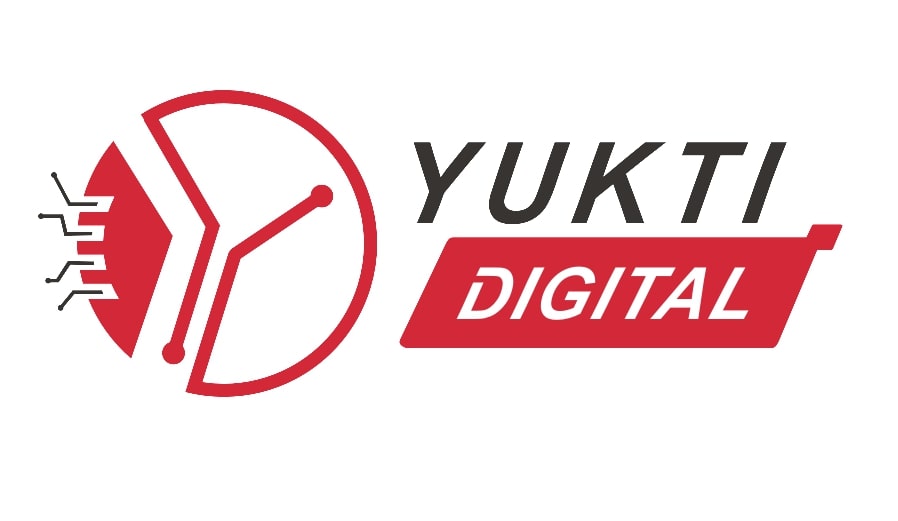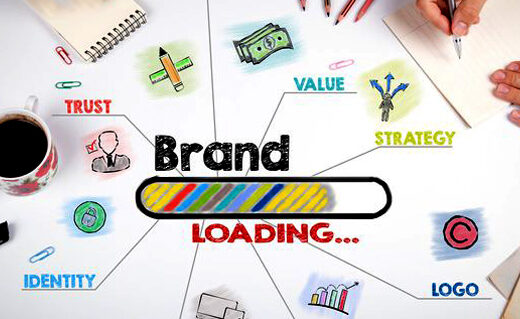The process of building a distinctive identity for a business or product that distinguishes it from rivals is known as branding. A strong brand is built on consistency and recognition, and logo design is an integral part of creating a consistent brand experience. A logo is a visual representation of a brand and can be one of the most powerful tools for creating a lasting impression on customers. In this blog, Yukti Digital will explore its role in creating a consistent brand experience.
The Importance Of A Logo In Branding
The visual identity of a brand must include a logo. It is the first visual representation of a company that customers see, and it helps to establish brand recognition and recall. A well-designed logo can create a powerful first impression and convey the essence of the brand in a single image.
A logo is also a critical element in creating a consistent brand experience across all touchpoints. It appears on everything from business cards and websites to packaging and offline advertising, and it helps to tie all of these different elements together into a cohesive brand experience.
Creating A Consistent Brand Experience
Consistency is key when it comes to branding. A consistent brand experience helps to build trust and credibility with customers, while also creating a sense of familiarity and recognition. They play a crucial role in creating a consistent brand experience, as it is often the most recognizable element of a brand. Here are some ways in which they can help to create a consistent brand experience:
Visual Consistency: A well-designed logo should be consistent in its visual elements, such as color, typography, and layout. This consistency helps to create a strong visual association with the brand, making it easier for customers to recognize and remember the brand.
Brand Personality: A logo can communicate a brand’s personality and values through its design. For example, a playful and colorful logo might suggest a fun and creative brand, while a more minimal and sophisticated logo might suggest a high-end and luxury brand.
Cross-Platform Consistency: A consistent design across all platforms, including social media, website, packaging, and offline advertising, can help to create a unified brand experience. This consistency helps to reinforce the brand’s message and identity, making it easier for customers to connect with and remember the brand.
Brand Differentiation: A well-designed logo can help to differentiate a brand from its competitors. By using unique design elements and visual cues, a logo can create a distinctive visual identity for the brand, making it stand out in a crowded market.
Brand Recognition: Customers are more likely to remember and recognize a brand if it has a recognized logo since there is a stronger relationship between the logo and the brand. An increase in client loyalty and repeat business may result from this acknowledgment.
Every brand has a narrative to convey, and the logo is a crucial part of that narrative. People frequently see a brand’s logo first, and it establishes the tone for the entire customer experience. A well-designed logo can assist in conveying a brand’s personality, beliefs, and objectives.
The Value Of Brand Storytelling
Before we dive into the impact of logo design on brand storytelling, let’s first understand why brand storytelling is so important. In today’s competitive market, it’s not enough to simply sell a product or service. Customers want to connect with the brands they use to make purchases. They are interested in the history and values of the brand. Brand storytelling is the art of crafting a narrative that captures the essence of a brand and connects with customers on an emotional level.
Brand Storytelling Can Help To:
Build Trust: When customers feel like they know a brand’s story, they are more likely to trust it.
Create Loyalty: Customers who feel connected to a brand are more likely to become repeat customers.
Differentiate From Competitors: A unique brand story can help a brand stand out in a crowded market.
Drive Sales: Emotional connections lead to increased brand loyalty, which in turn leads to more sales.
Best Practices For Logo In Brand Storytelling
Now that we understand the impact of logos on brand storytelling, let’s explore some best practices for logo design.
Understand The Brand Story: Before designing a logo, it’s important to understand the brand’s story. What values and personality traits does the brand want to communicate? What is the brand’s mission?
Do Not Complicate: Often, a basic logo is the most powerful. A complex logo can be difficult for customers to remember and can distract from the brand’s story.
Use Colour Thoughtfully: Colour can be a powerful tool in building a logo. Different colors can communicate different emotions and can help to reinforce the brand’s story. However, it’s important to use color thoughtfully and not overwhelm the design.
Consider Typography: The font used in a logo can communicate a lot about a brand’s personality. A playful font can communicate a fun and friendly brand, while a more formal font can communicate a professional and serious brand.
Test The Logo: Before finalizing a logo, it’s important to test it with potential customers. This can help to ensure that the logo effectively communicates the brand’s story and resonates with the target audience.
The Impact Of Logo Design On Brand Trust
Brand trust refers to the degree to which consumers trust a particular brand and its products or services. A well-designed logo can help to create a sense of trust by conveying professionalism, quality, and reliability. When consumers see a well-designed logo, they are more likely to trust the brand and its products or services.
The Importance of Logo in Brand Differentiation
Brand differentiation refers to the degree to which a brand stands out from its competitors. A well-designed logo can help to create a unique and memorable visual identity that sets a brand apart from its competitors. When consumers see a distinctive logo, they are more likely to remember the brand and its products or services.
Tracing The Trends And Innovations In Brand Identity
Logo design trends have come a long way over the years, from simple designs to more complex and intricate ones. As technology has advanced and businesses have become more competitive, they have become more important as they are often the first point of contact between a business and its potential customers. Let’s now take a look at the evolution of their trends over the years.
Pre-20th Century Logos
Before the 20th century, logos were generally simple designs that were used to identify a business or organization. These logos were often just simple symbol or monogram that was easy to reproduce and recognize. Examples of pre-20th century logos include the coat of arms used by the royal families of Europe and the monogram used by Louis Vuitton.
The Birth Of Corporate Identity
In the 1950s and 60s, the concept of corporate identity began to take shape. This meant that companies started to focus more on creating a unique identity that would set them apart from their competitors. Logos became more important as they were a key element of a company’s visual identity. During this time, logos became more abstract and were often designed to be more memorable. The Nike Swoosh and the Apple logo are both examples of logos that were created during this time.
The Rise Of Minimalism
In the 1970s and 80s, logos became even simpler and more minimalistic. This was in part due to the rise of digital design tools that made it easier to create simple designs. Logos during this time were often just a single color and consisted of a simple symbol or lettering. The IBM and FedEx logos are both examples of logos that were created during this time.
The 3D Era
In the 1990s and early 2000s, logos became more complex and 3-dimensional. With the rise of computer graphics, designers were able to create logos that were more detailed and intricate. Logos during this time often used shading and gradients to create a 3-dimensional effect. The AOL and AT&T logos are both examples of logos that were created during this time.
The Flat Design Revolution
In the mid-2000s, a new trend emerged in their design – flat design. Flat design is characterized by simple, two-dimensional shapes and bright colors. This style of design is often associated with the rise of mobile technology, as it is easier to create a design that is easily recognizable on a small screen. Examples of logos that use flat design include the Google and Airbnb logos.
The Return Of Minimalism
In recent years, we have seen a return to minimalistic designs in logos. Logos are once again becoming simpler and more abstract. This trend is in part due to the rise of social media, as simple designs are often more easily recognizable on small screens. Examples of logos that use minimalistic design include the Dropbox and Spotify logos.
The Power Of A Well-Designed Logo
A logo is a crucial element of a brand’s visual identity, and it plays a significant role in building brand recognition, recall, loyalty, trust, and differentiation. A well-designed logo can create a powerful first impression, convey the essence of the brand in a single image, and help to create a consistent brand experience across all touchpoints. The evolution of their trends has been influenced by changes in technology, changes in the economy, and changes in society. As we move forward, it will be interesting to see what new trends emerge in such design. As such, businesses should invest in creating a unique and memorable logo at Yukti Digital that reflects their brand’s values, personality, and positioning.
Important Link :






